
Deep Vein Thrombosis
Flying can be an exhausting experience for any traveler, but older adults in particular may face a variety of additional psychological and physiological challenges that inhibit their ability to travel. Deep vein thrombosis (DVT) is one such challenge. DVT is a potentially life threatening condition that older adults are at a higher risk of developing within the cabin. DVT occurs when blood clots form in the deep veins of the thigh and more commonly the calf muscles.
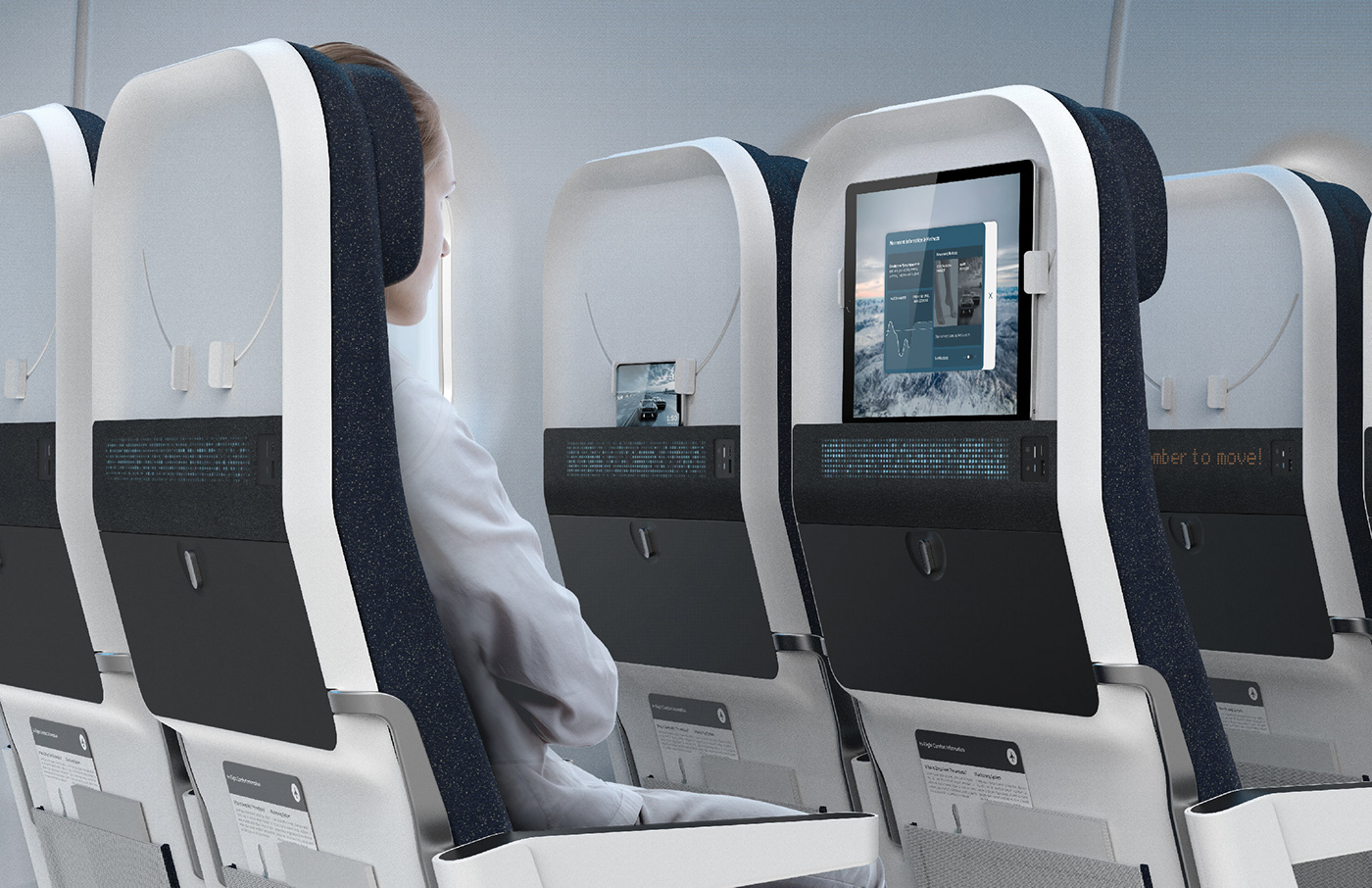
ELEVATE Active Seating
ELEVATE addresses the problem of DVT through tracking users’ movements, informing them of long periods of inactivity, and providing movement methods to increase blood flow, resulting in a reduced risk of DVT for both older adults and the broader passenger population.


Primary & Secondary Research
The project began with a broad literature review of the relationship between comfort and the overall flying experience for older adults. This was complimented by primary research in the form of focus groups and user observation to gain insight into the needs of the target user. Many aspects were considered, and the problem of DVT was highlighted as a significant pain point of travelling for this demographic.
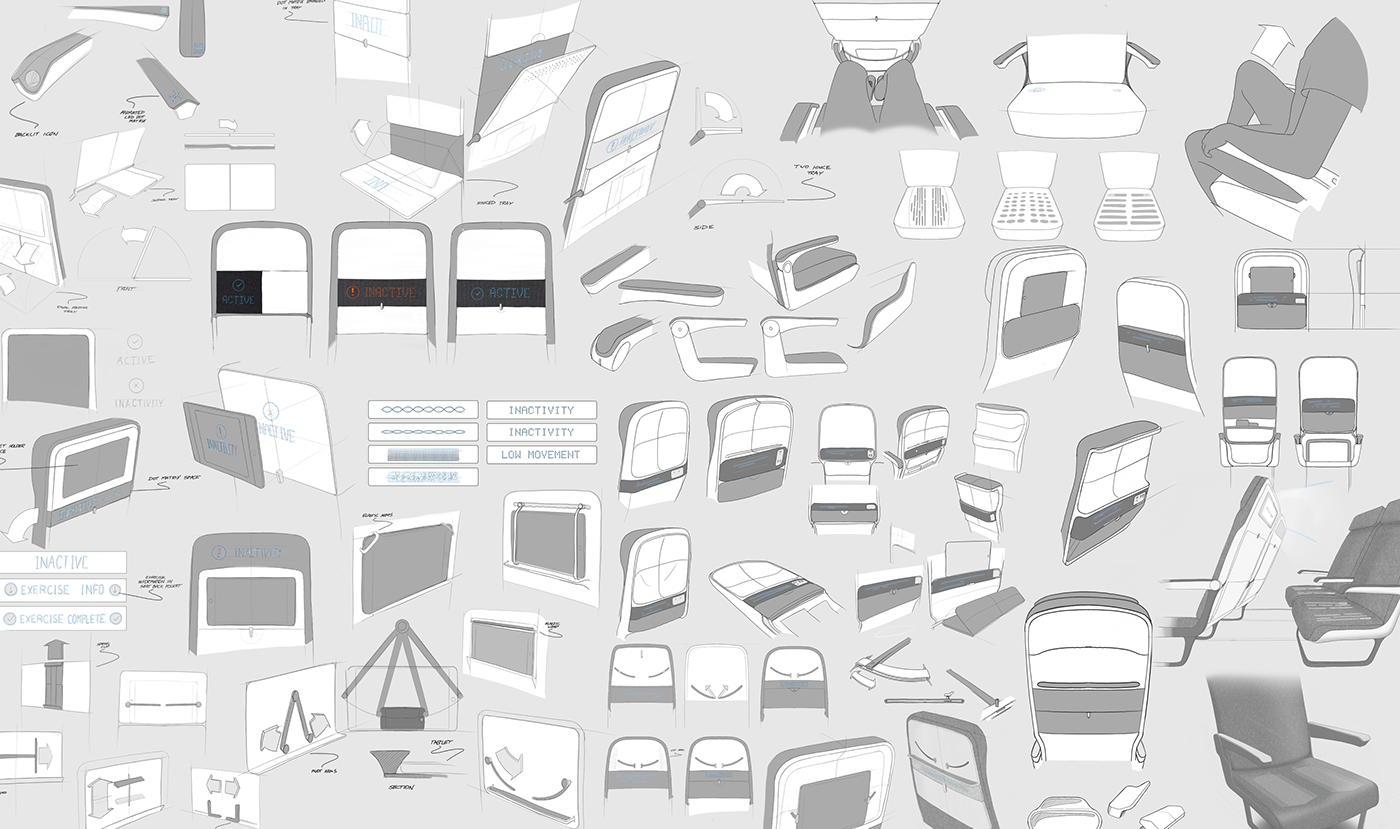
Ideation
Following the initial research, concepts were developed and refined through sketching, wire-framing, research and prototyping.


Prototyping & User Testing
User testing with older adults and functioning models provided crucial results for informing the direction of the final design and ensuring it was centred around the target demographic.
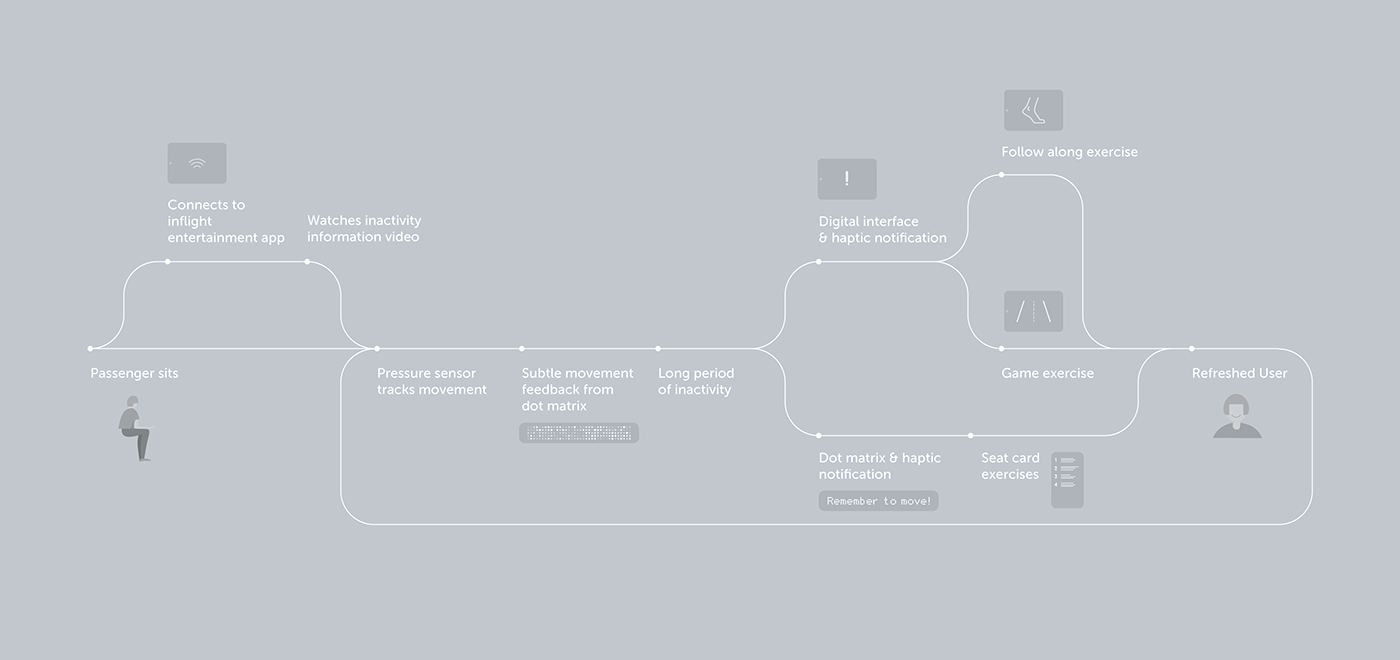
Track, Notify, Move & Repeat
The final design of ELEVATE is a result of seven months of research, user testing, problem solving, ideation and design. The smart seating system tracks user’s movements and gives them valuable feedback for ways they can prevent DVT and travel with peace of mind.

Movement Tracking
An array of force sensing resistors embedded within the seat pan allow the system to accurately monitor the movement of users and pinpoint specific areas of inactivity. Also within the seat pan, are two piezoelectric vibration motors which provide non-intrusive haptic feedback of inactivity.


Notification
If the user has paired a device with the inflight entertainment app, they will receive an onscreen notification and haptic pulse. From this notification, they are given to option to learn more about their activity levels. If the user has not paired a device, the dot matrix will provide a series of notifications. Firstly, it will remind the user to stay mobile as well as guide their attention, using arrows, towards an information card including exercises in the seat pocket.
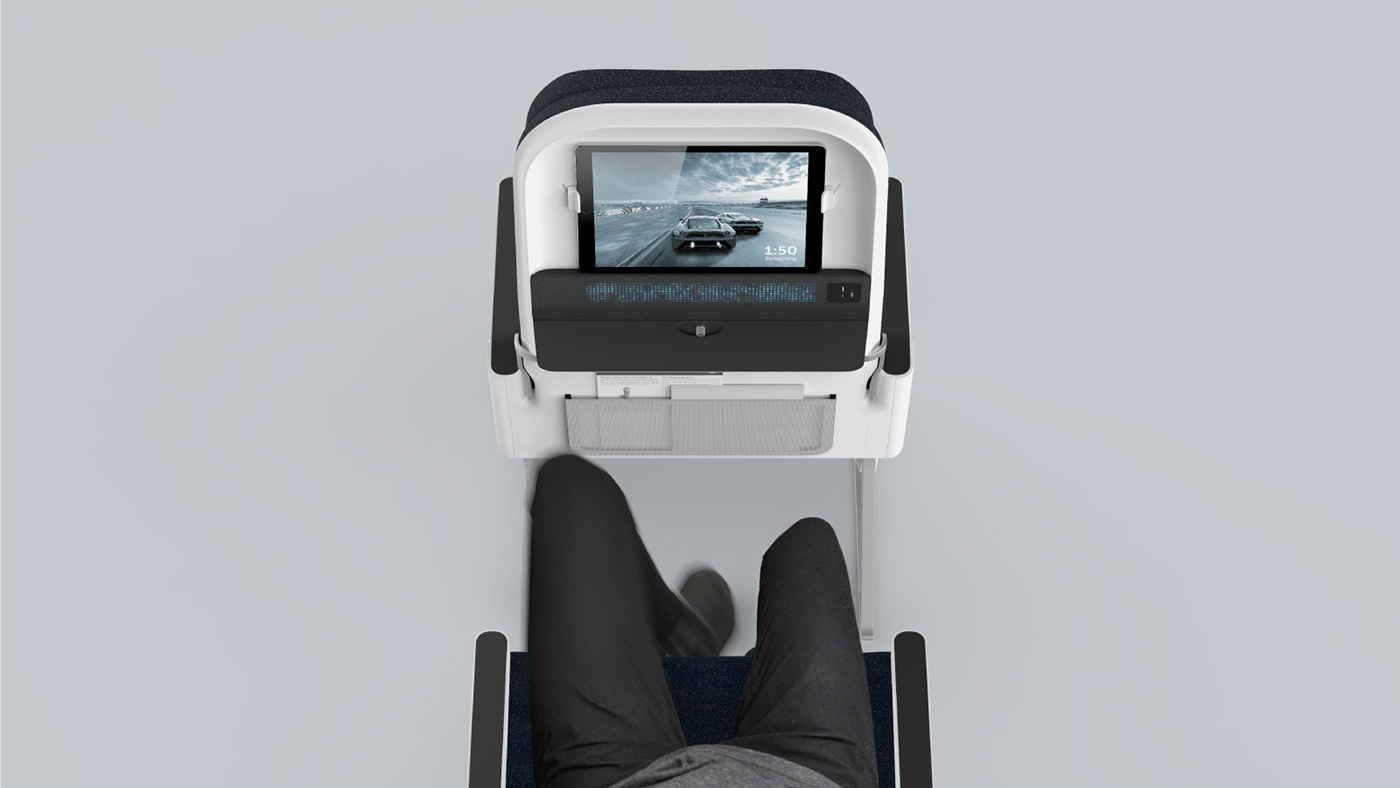
Game Movement
One method of movement for users paired with the app is to play game using the force sensors in the seat as a controller. This means the user could turn a car to the left by raising the left leg, resulting in increased movement and blood flow. The game aspect of the design also opens up ELEVATE to the broader demographic of passengers, who could all benefit from increased movement and the resulting refreshed feeling.
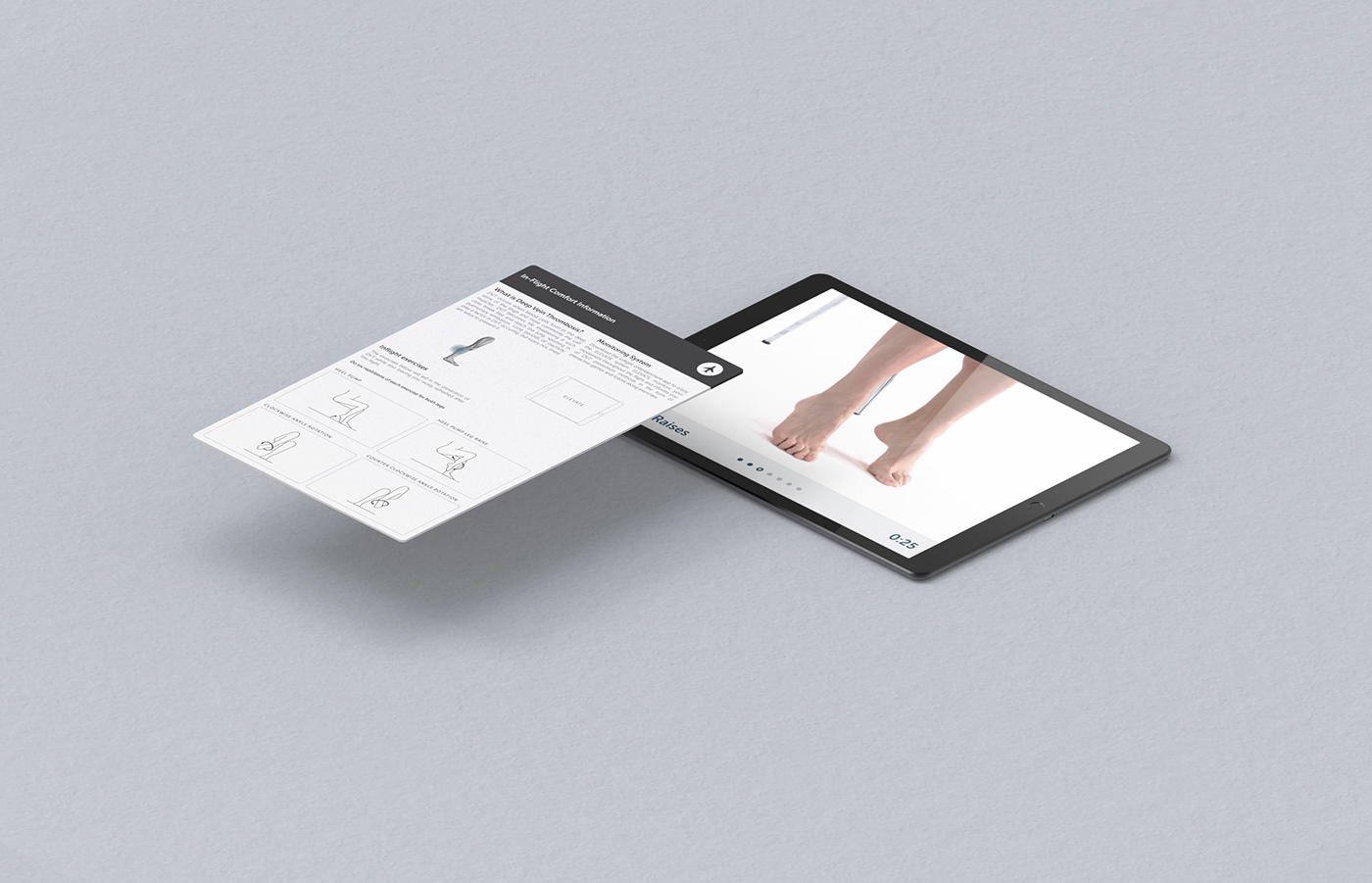
Follow Along Movement
Alternative to the game, users paired to the app can mimic the necessary exercises displayed on-screen. This method provides a clear objective of exercise, which was a key insight during the focus groups and user testing. For users without a device, the information card located in the seat pocket will give information on DVT and inactivity as well as exercises that they can follow.
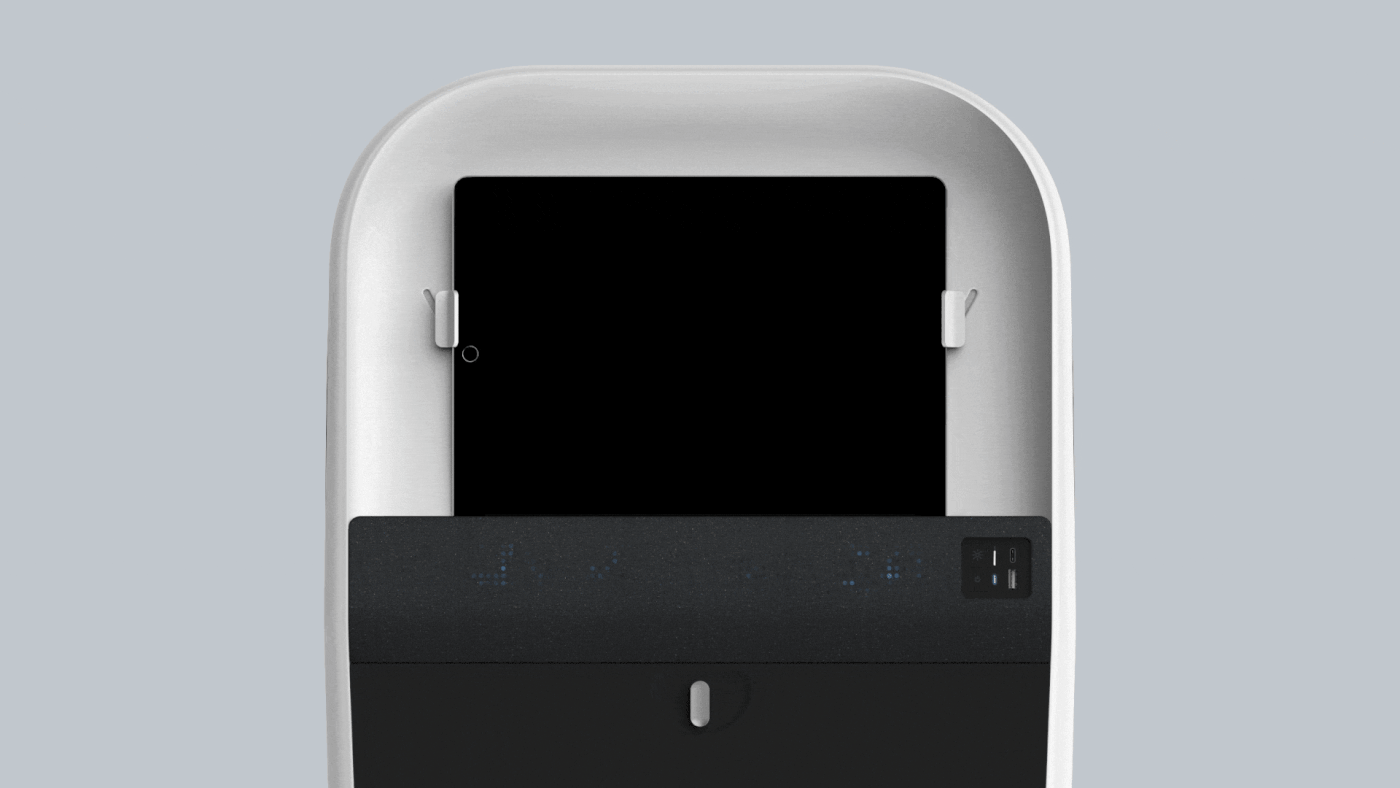
Calming Feedback
During the flight, the dot matrix displays a wave animation that reacts the movements of users. With an increase of motion, the wave reacts with increases flow and brightness. This is intended to remind users of the importance of movement before a long period of inactivity is sensed, which is when the fully notifications are displayed.
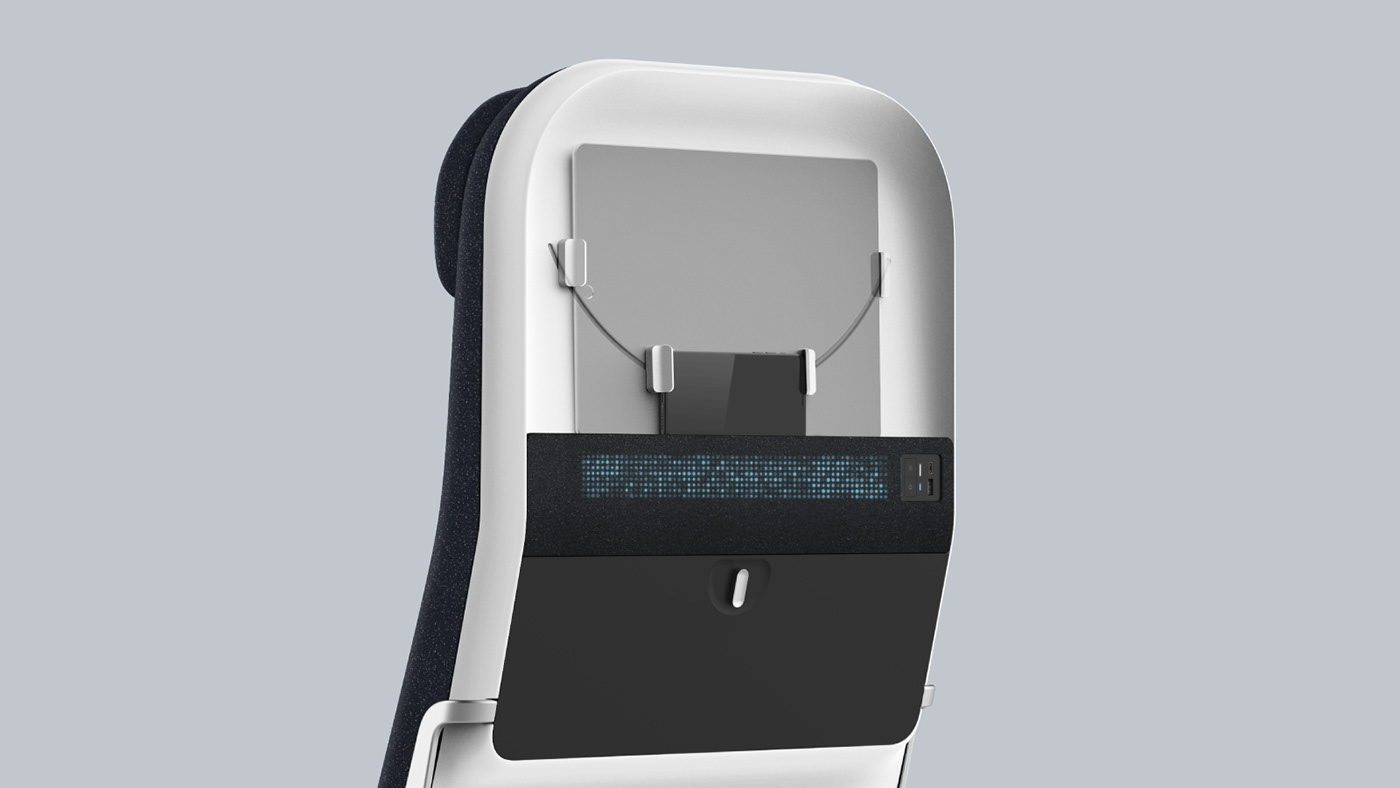
Secured Devices - Small or Large
With many airlines moving away from integrated seatback entertainment systems, a device holder was developed. The spring-loaded arms accommodate a wide range of devices (large tablets to small phones), securing them from three contact points including the ledge in which they rest. Wireless charging could be an optional value-added integration.

User Interface
The graphical user interface was designed to empower users through providing them with detailed information about their activity levels during the flight. The digital interface aspect of ELEVATE would ideally be integrated into existing airline’s in-flight entertainment applications to facilitate a seamless experience.








